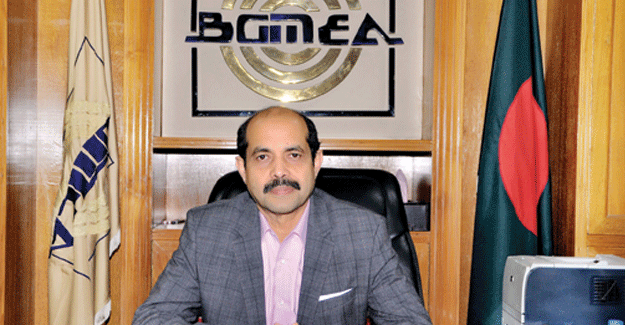
Bangladesh: IT solutions can take the garment industry to the next level
Md. Atiqul Islam, President of Bangladesh Garments Manufacturers & Exporters Association (BGMEA), in an interview with Textile Excellence, speaks about the need for upgraded education that will churn out skilled and talented mid-level managers, much needed by the Bangladesh garment industry.
What is the situation in the RMG industry following the Rana Plaza tragedy?
Following the Rana Plaza tragedy, as we all know, European and North American retailers have formed their respective committees - Accord and Alliance - to inspect and implement safety standards in the factories they source from.Then there is the ILO's Better Works Programme, and the Bangladesh government's national action plan for industrial safety, new labour laws have been framed. Overall, the industry and various agencies are serious about industrial safety norms and practices. It is however, important, that the various national plans and requirements of various agencies are synchronized, so that duplicity is avoided, and implementation is effective.BGMEA has been successful in overcoming a big challenge of getting import duties waived on fire safety doors. These doors attracted a duty between 61-131%. Duty-free imports will bring down the costs significantly, and spur industry to import standard quality products. The government is in the process setting up economic zones for the garment industry, this is a welcome step. So, there is a positive trend in the industry, even as we have had to face a smear campaign by the media.A lot still remains to be done. There is need to start a social dialogue between entrepreneurs and workers, and BGMEA is working on this. Another important issue is training mid-level managers, workers and also entrepreneurs as trade unions come into existence.
Why does the industry feel the need to outsource skilled people from abroad even as the sector is on the path to maturity?
It is unfortunate that private universities and government universities have not included subjects like merchandising, and technical subjects like CAD, etc, into their curriculum, even as RMG is the country's largest industrial sector. Recently BUET introduced IPE (Industrial and Production Engineering) which is a good initiative. BUET students are getting quickly absorbed in the industry. BGMEA's BUFT has also addressed this lacuna in conventional curriculum.We have a lot of experience in backward linkages industries. An emerging trend is the need for skills in forward linkages such as making presentations to buyers - line presentations, design presentations, fashion presentations. For this, at present, the industry depends on the agents to give such presentations, we get business through these agents, and it is an expensive process. A number of institutes realise the need for such skill development, which will find many takers in the industry.It is true that the industry outsources a lot of people with high levels of professional and technical education and experience, from other countries.
What is your opinion about the vibrant younger IT savvy generation? How do you tap the IT wiz kids in garment industry?
Information technology is another big opportunity for Bangladesh. Garments industry requires expertise in IT. At present, a number of factories are implementing ERP (Enterprise Resources Planning) system where system loss, product loss, etc can be identified through the software system.We boast of an expanding educated middle class, but if this breed of students can be trained in IT solutions, that will take the garment industry to the next level. Today, we need not just industrial and production engineering, but also IT engineers in the industry. And IT solutions can be all pervading, not just limited to production.
Textile Excellence
If you wish to Subscribe to Textile Excellence Print Edition, kindly fill in the below form and we shall get back to you with details.








